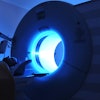In two new studies to be published in the September 27 Journal of the American Medical Association, researchers demonstrated effective prediction models that incorporate personal and family medical histories to identify patients with a gene mutation associated with a certain type of colorectal cancer.
The developments are important because effective models can help identify individuals for whom cancer screening is imperative for the maintenance of health and longevity. Ultimately, they could also steer colorectal cancer screening resources to those individuals who need them most urgently.
Researchers have long sought ways to predict who would most likely develop colorectal cancer (CRC), particularly hereditary Lynch syndrome, also known as hereditary nonpolyposis colorectal cancer (HNPCC), the most common form of hereditary colorectal cancer in Western countries.
In the early 1990s the genetic basis for Lynch syndrome was revealed with the discovery that germline mutations in the mismatch DNA repair genes MLH1, MSH2, and others were associated with a high susceptibility to colon and endometrial cancer, and elevated risk of cancer of the ovary, stomach, small bowel, liver, ureteral tract, and brain. But the test is expensive and does not yield perfect sensitivity or specificity, making it more useful when applied to a population most likely to be positive for the mutations.
For colorectal cancer, family relations are known to be important risk factors. A quarter of all CRC cases occur in families containing other members with CRC, and "3% to 4% of CRCs occur in families with a clear autosomal dominant pattern of inheritance, the most common of which is Lynch syndrome," wrote Dr. James Ford and Alice Whittemore, Ph.D., in an accompanying editorial (JAMA, September 27, 2006, Vol. 296:12, pp. 1521-1523).
The Amsterdam clinical criteria (three affected family members in at least two generations with one person diagnosed before age 50) were highly specific but too restrictive to identify all those at risk, Ford and Whitmore wrote. Other criteria, including the Bethesda criteria as well as immunohistochemical analysis to detect loss of mismatch repair protein expression, have helped identify more of those at risk, especially in younger patients. But molecular pathology tests are less useful for individuals who are diagnosed at a later age, and phenotype testing is not possible when tumor tissue is unavailable. Better predictive models are needed.
Personal and family history
In the first of two new JAMA studies, Dr. Judith Balmana, formerly of the Dana-Farber Cancer Institute in Boston, and colleagues developed a clinical model, the PREMM1,2 (Predictions of Mutations in MLH1 and MSH2), to predict these mutations based on personal and family medical histories. For the study, the model was initially developed in 898 individuals, and subsequently validated in 1,016 patients, according to the researchers (JAMA, September 27, 2006, Vol. 296:14, pp. 1469-1478).
A total of 14.5% (130/898) of the study population had the mutations, including 6.5% in MLH1 and 8.0% in MSH2, the authors reported. In the validation cohort, 15.3% had the mutations, which were particularly prevalent among probands (the patient who is the first member of a family to be studied).
"Strong predictors of mutations included proband characteristics (presence of colorectal cancer, especially ≥ 2 separate diagnoses, or endometrial cancer) and family history (especially the number of first-degree relatives with colorectal or endometrial cancer," Balmana and colleagues wrote. "Age at diagnosis was particularly important for colorectal cancer. The multivariable model discriminated well at external validation, with an area under the receiver operating characteristic curve of 0.80 (95% CI, 0.76-0.84)."
Personal and family history can accurately predict the outcome of genetic testing in a large population at risk for Lynch syndrome, the group concluded.
"Our prediction rule includes specific and discrete variables, and does not rely on complex combinations of diagnoses across generations," the authors wrote. Rather, they stated, it has been shown to be an objective and easy-to-use tool for estimating the likelihood of MLH1/MSH2 gene mutations, and perhaps for guiding the molecular evaluation strategy.
Johns Hopkins model
Another new JAMA study takes a slightly different and more invasive approach to probability modeling, using family medical history and tumor information to develop a model for predicting the genetic risk for developing colorectal and endometrial cancer.
Sining Chen, Ph.D., from the Johns Hopkins Bloomberg School of Public Health in Baltimore, and his colleagues aimed to develop a genetic counseling and risk prediction model called MMRpro to estimate the probability of carrying a mutation in mismatch repair MMR genes MLH1, MSH2, or MSH6, as well as the probability of developing colorectal or endometrial cancer (JAMA, September 27, 2006, Vol. 296, pp. 1479-1487).
"MMRpro predicted the presence of approximately 129 mutations," Chen and colleagues wrote. "This shows a close correspondence with the observed 121 mutations (ratio of observed to expected results, 0.94.... This results in higher accuracy than existing alternatives and current clinical guidelines."
The MMRpro model makes efficient use of family history and tumor information to provide individualized evaluations, the researchers wrote. "Because model-based prediction algorithms are increasingly used in genetic counseling and prevention activities, MMRpro is a timely tool for identifying and counseling families at risk for the Lynch syndrome, and can improve current genetic counseling and early detection practice."
Advantages of two methods
In their JAMA editorial, Ford and Whittemore compared the two predictive models. "The algorithms developed by Balmana et al (and a third algorithm recently proposed by Barnetson et al [New England Journal of Medicine, June 29, 2006, Vol. 354:26, pp. 2751-2763]) use a multivariate logistic regression model to predict carrier status based on personal and family history of colon cancer and other Lynch syndrome cancers," they wrote. "In contrast, the algorithm used by Chen et al involves a detailed parametric model, invoking the Bayes rule to estimate the probability that the counselee carries a mutation, given his or her personal and family history of Lynch syndrome malignancies."
The Chen model uses more input data (particularly from unaffected relatives) than either of the two multivariate logistic regression models. "This additional information may improve performance but could work against prediction accuracy when the detailed information is unknown or erroneous," they wrote. Tumor MSI data can be used in the prediction rules of both the Barnetson and Chen models but not in the Balmana model.
The key clinical issues will involve determining how these rules will perform in practice and whether one model or the other will work better for certain patients, they noted. Calibration ability and discriminatory ability are the yardsticks by which their effectiveness will need to be measured, Ford and Whittemore wrote.
"These prediction rules should form very useful tools for clinicians and their patients, as well as for epidemiologists who wish to assess both the magnitude of (HNPCC) and the potential usefulness of preventive efforts," they concluded.
To validate the methods further, all of the rules should be evaluated using a single dataset, particularly in a population-based study, Ford and Whittemore wrote. And the largely Caucasian, European population used to develop the models should be expanded to include other ethnic groups, in whom the prevalence and penetrance of Lynch syndrome is poorly understood.
By Eric Barnes
AuntMinnie.com staff writer
September 27, 2006
Related Reading
Oral mucosal color suggests high risk of hereditary colorectal cancer, September 20, 2006
Low folate levels may decrease risk of colorectal cancer, September 18, 2006
New test predicts colorectal cancer outcomes, September 14, 2006
Recombinant approach helps T cells target colorectal tumors, August 8, 2006
Multiple genetic loci tied to colorectal cancer susceptibility, March 2, 2006
Copyright © 2006 AuntMinnie.com



















